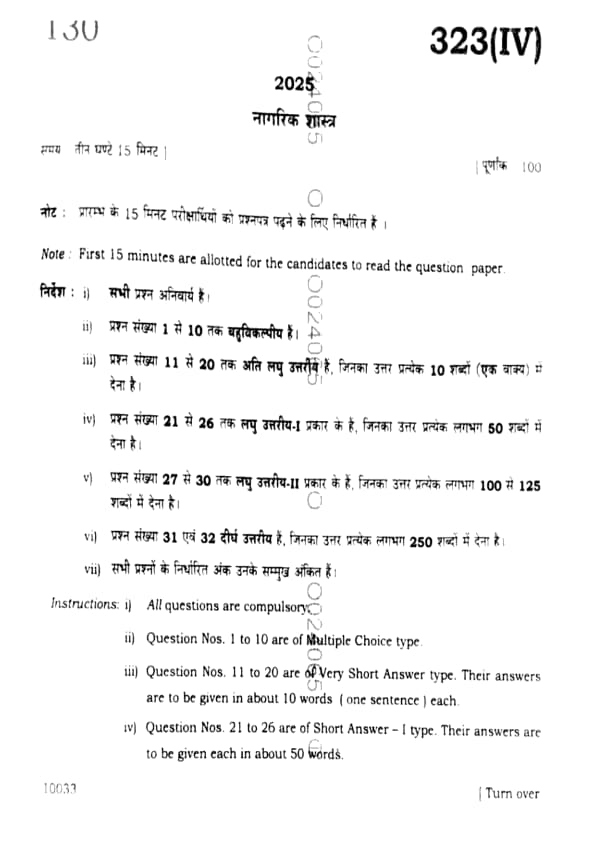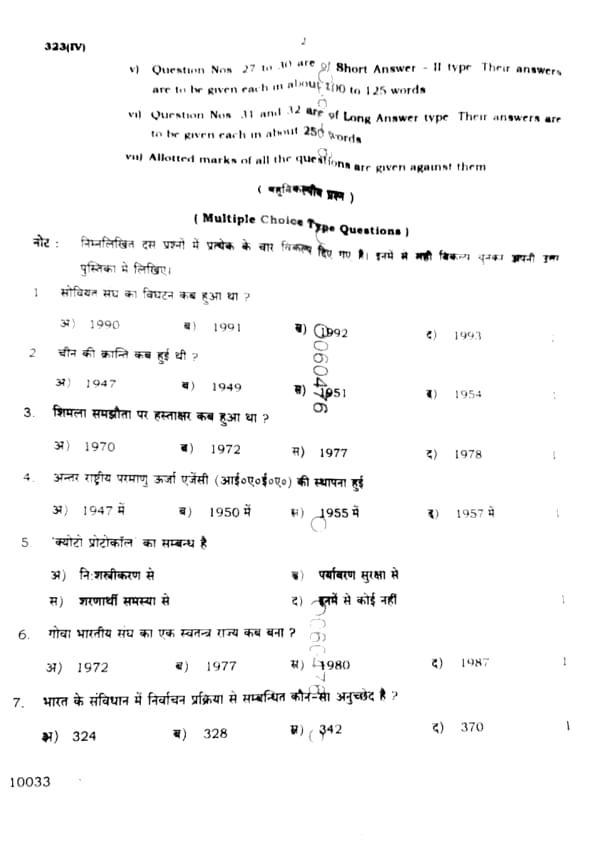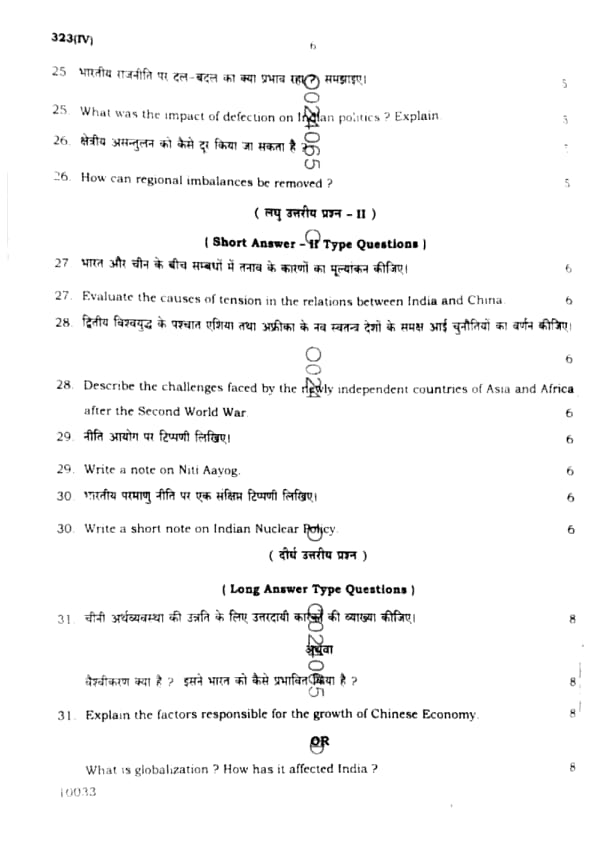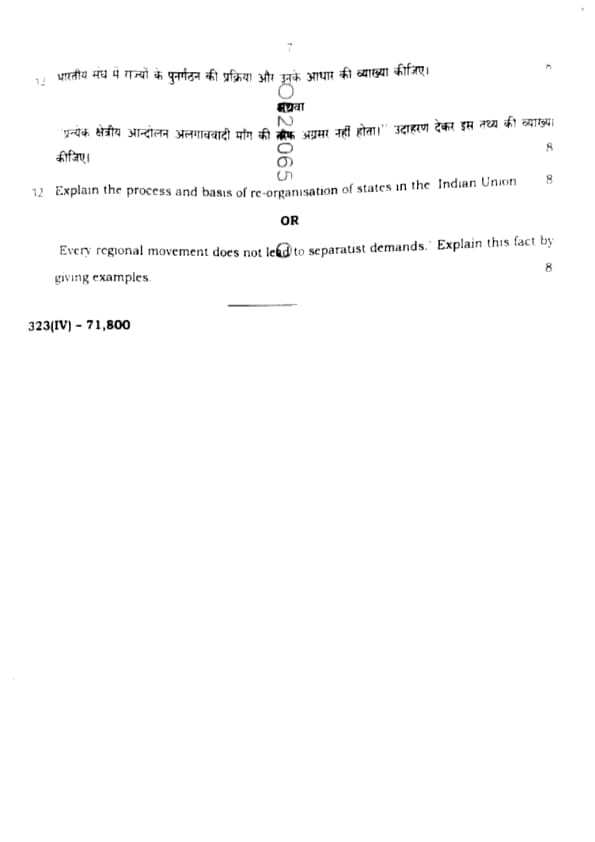UP Board Class 12 Civics Question Paper 2025 PDF (Code 323 IV) is available for download here. The Mathematics exam was conducted on March 1, 2025 in the Evening Shift from 2:00 PM to 5:15 PM. The total marks for the theory paper are 100. Students reported the paper to be easy to moderate.
UP Board Class 12 Civics Question Paper 2025 (Code 323 IV) with Solutions
| UP Board Class 12 Civics Question Paper with Answer Key | Check Solutions |

When did the Soviet Union disintegrate?
When did the Chinese Revolution take place?
When was the Shimla Agreement signed?
The International Atomic Energy Agency (I.A.E.A.) was established in
'Kyoto Protocol' is related to
When did Goa become an independent state of the Indian Union?
Which article in the Constitution of India deals with the election process?
Where was the first Non-Aligned Conference held?
Who nationalized banks in India?
Who was the Prime Minister of India when the Mandal Commission report was implemented?
Describe any two characteristics of the Soviet Political system.
Which currency is run by the European Union?
Mention the number of permanent and temporary members of the Security Council of the United Nations.
What do you understand by common property?
What is globalization?
Write the names of any two Indian princely states which opposed merging with India after independence?
When did the first Five-Year Plan start and what was its objective?
Mention any two principles of Panchsheel.
Who abolished the 'Privy Purse' in India?
What do you mean by 'appeasement'?
What were the consequences of the disintegration of the Soviet Union?
What are the highlights of ASEAN Vision 2020?
Suggest any two important changes to improve the functioning of the Security Council.
'In Indian politics, the period from the year 1952 to 1966 is called the period of one-party dominance.' Do you agree with this statement?
What was the impact of defection on Indian politics? Explain.
How can regional imbalances be removed?
Evaluate the causes of tension in the relations between India and China.
Describe the challenges faced by the newly independent countries of Asia and Africa after the Second World War.
Write a note on Niti Aayog.
Write a short note on Indian Nuclear Policy.
Explain the factors responsible for the growth of the Chinese economy.
What is globalization? How has it affected India?
Explain the process and basis of re-organisation of states in the Indian Union.
Every regional movement does not lead to separatist demands. Explain this fact by giving examples.










Comments